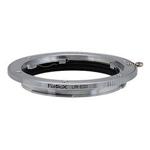
Fotodiox Lens Mount Adapter, Leica R Lens to Canon EOS Camera Adapter, for Canon EOS 1d,1ds,Mark II, III, IV, 5D, Mark II, 7D, 10D, 20D, 30D, 40D, 50D, 60D, Digital Rebel xt, xti, xs, xsi, t1i, t2i, 300D, 350D, 400D, 450D, 500D, 550D, 1000D - Reviews
646 reviews
Info
Reviewbucket.co.uk scanned the internet for Fotodiox Lens Mount Adapter, Leica R Lens to Canon EOS Camera Adapter, for Canon EOS 1d,1ds,Mark II, III, IV, 5D, Mark II, 7D, 10D, 20D, 30D, 40D, 50D, 60D, Digital Rebel xt, xti, xs, xsi, t1i, t2i, 300D, 350D, 400D, 450D, 500D, 550D, 1000D reviews.
You can find all Fotodiox Lens Mount Adapter, Leica R Lens to Canon EOS Camera Adapter, for Canon EOS 1d,1ds,Mark II, III, IV, 5D, Mark II, 7D, 10D, 20D, 30D, 40D, 50D, 60D, Digital Rebel xt, xti, xs, xsi, t1i, t2i, 300D, 350D, 400D, 450D, 500D, 550D, 1000D reviews and ratings on this page.
Analysis
For Fotodiox Lens Mount Adapter, Leica R Lens to Canon EOS Camera Adapter, for Canon EOS 1d,1ds,Mark II, III, IV, 5D, Mark II, 7D, 10D, 20D, 30D, 40D, 50D, 60D, Digital Rebel xt, xti, xs, xsi, t1i, t2i, 300D, 350D, 400D, 450D, 500D, 550D, 1000D, 646 customer reviews collected from 1 e-commerce sites, and the average score is 4.1.
Detailed seller stats;
Amazon has 646 customer reviews and the average score is 4.1. Go to this seller.
Detail
Similar Items
